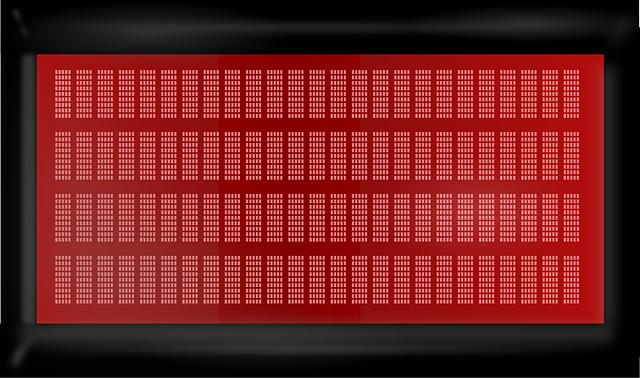Understanding Glue Laminated Beam (glulam) dimensions is crucial for structural integrity and cost-effectiveness. Key factors include application (residential, commercial, industrial), load demands, wood species, span length, building codes, and budget. Standard glulam sizes range from 4×8 to 12×16 inches, with larger beams for heavier loads and higher costs. Customization offers design flexibility but requires clear communication and expert consultation. Consult industry standards and experts for accurate selection, available at (607) 369-9341 or 18 Clifton St, Unadilla, NY 13849.
“Discover the essential guide to glulam beam dimensions, a crucial aspect of structural engineering. This comprehensive article unravels the intricacies of glue-laminated beams (glulam) and their varying dimensions. From understanding basic concepts to exploring cost factors, we navigate the landscape of glulam choices. Learn how dimensions are influenced by strength requirements and span needs, while also delving into customization options. Whether you’re an architect or builder, this price guide empowers informed decisions for your next project.”
- Understanding Glulam Beam Basics
- Factors Influencing Dimension Choices
- Common Glulam Beam Dimensions
- Specifying Required Strength and Span
- Cost Considerations for Different Sizes
- Customization and Ordering Guidelines
Understanding Glulam Beam Basics

Understanding Glulam Beam Basics
A Glue Laminated Beam, or glulam beam, is an engineered wood product that combines multiple layers of laminated wood panels with internal glue connections. These beams are designed to offer exceptional strength and stability, making them a popular choice for construction projects, especially in residential and commercial buildings. The dimensions of a glulam beam play a critical role in its structural integrity and performance. Key factors influencing these dimensions include the intended application, load-bearing requirements, and architectural design.
When considering glulam beam depth guidelines, it’s essential to look at standard glue laminating beam measurements. Beams are typically measured by their depth (or height), width, and length. For instance, a 4×8 glulam beam refers to a depth of 4 inches, a width of 8 feet, and can vary in length according to the project needs. Glulam beam height considerations should also be taken into account, as they directly impact the structural support provided. The right dimensions ensure that the glulam beam effectively meets the structural demands while aligning with architectural aesthetics, making it a versatile component for modern construction. To gain more insights or for specific guidance, give us a call at (607) 369-9341.
Factors Influencing Dimension Choices

When determining Glue Laminated Beam Dimensions for structural applications, several factors come into play. Firstly, the intended use and load-bearing requirements heavily influence dimension choices. Beams designed for heavy-duty industrial settings will differ in size and strength from those used in residential construction projects. Secondly, material properties such as wood species, quality, and moisture content directly impact the recommended dimensions to ensure structural integrity. For instance, harder and denser woods like Douglas Fir may allow for larger beam sizes compared to softer varieties.
Additionally, engineering best practices for glulam beam sizing must consider factors like span length, joint placement, and connection methods. What are typical glulam beam sizes can vary based on these considerations, with manufacturers often providing guidelines and recommended glue lam beam dimensions tailored to different applications. To ensure optimal performance and safety, it’s crucial to consult industry standards and, if needed, give us a call at (607) 369-9341 for expert guidance on selecting the appropriate Glue Laminated Beam Dimensions for your specific project requirements.
Common Glulam Beam Dimensions

When it comes to Glue Laminated Beam Dimensions (Glulam), there are several standard sizes available to cater to various construction needs. These beams, known for their strength and versatility, are engineered by laminating multiple layers of wood veneers with strong adhesives, resulting in a high-performance structural element. The common dimensions range from 4×8 to 12×16 inches, offering a wide array of options for builders and designers.
Selecting the appropriate glue lam beam size depends on factors like load capacity, span requirements, and architectural design. For instance, smaller beams with dimensions like 4×6 or 6×8 are suitable for residential projects with lighter loads, while larger beams such as 10×12 or 12×16 can handle heavier structural demands in commercial buildings. As a reliable resource, visit us at 18 Clifton St, Unadilla, NY 13849 to explore our comprehensive glue laminated beams sizing guide and find the perfect solution for your construction project. Our team is dedicated to helping you choose the right size for your needs, ensuring structural integrity and aesthetic appeal.
Specifying Required Strength and Span

When specifying glue laminated beam (glulam) dimensions for a construction project, determining the required strength and span is a crucial step. This involves understanding the structural demands of the building or application to ensure the glulam beams can safely support the intended loads while spanning the desired distances. Factors such as live and dead loads, span length, and local building codes all play significant roles in this calculation.
The process begins with assessing the project’s structural requirements. Engineers should consider the type of construction, whether it’s a residential, commercial, or industrial building, and the specific load conditions that will be placed on the beams. Once these factors are understood, how to select glue laminated beam sizes can become clearer. A glulam beam dimensions chart or laminated wood beam sizes guide can be invaluable during this phase, helping to match the appropriate dimension to the project’s needs. For a more tailored approach, consult with structural engineers who can provide expert advice and ensure compliance with local building regulations. Visit us at 18 Clifton St, Unadilla, NY 13849 anytime for personalized assistance.
Cost Considerations for Different Sizes

When considering the cost of glue laminated beams, it’s crucial to understand that price points vary significantly based on dimensions. Larger beam sizes, suitable for structural applications in commercial and industrial projects, tend to be more expensive due to the increased material requirements and manufacturing complexities. On the other hand, smaller glulam beam dimensions, often used in residential or lighter commercial structures, offer a more cost-effective solution.
The best practices for glulam beam sizing involve balancing structural needs with economic factors. Referring to our glue laminated beam size guide can provide valuable insights into what are standard glued lam beam sizes and how they correlate with pricing. To get tailored advice, don’t hesitate to give us a call at (607) 369-9341. Our team is well-versed in the best practices for glulam beam sizing, ensuring you make informed decisions that align with both your budget and project requirements.
Customization and Ordering Guidelines

When it comes to glue laminated beam dimensions, customization options can significantly impact your project’s structural integrity and aesthetics. While standard glulaminated beam sizes offer efficiency and cost-effectiveness, custom orders allow for unique design elements and tailored strength requirements. If you need a specific dimension that isn’t listed, consider the material properties and intended load-bearing capacity to determine the feasibility of a customized glue laminated beam.
Ordering guidelines vary between suppliers, but generally, specifying your required dimensions, desired finish, and any special features or connectors should be done clearly. For accurate how to select glue laminated beam sizes guidance, consult industry standards and consider consulting with an expert. To ensure quality, check that the supplier you choose offers reliable products and services, as seen by visiting us at 18 Clifton St, Unadilla, NY 13849 anytime. Comparing glulaminated beam dimensions from different manufacturers can also help you find the best fit for your project while adhering to standard size guidelines.
When selecting glulam beam dimensions, understanding the interplay between structural requirements, cost, and customization is key. This comprehensive guide has walked you through the essential aspects, from the basics of glue laminated beams to specifying strength and span, as well as cost variations across different sizes. By considering the factors discussed, you’re now equipped to make informed decisions tailored to your project’s unique needs, ensuring a robust and economical structural solution.














